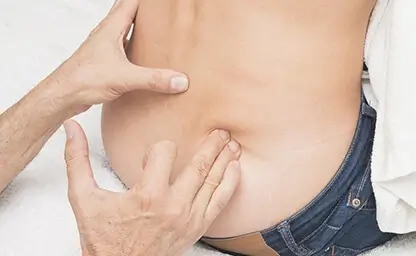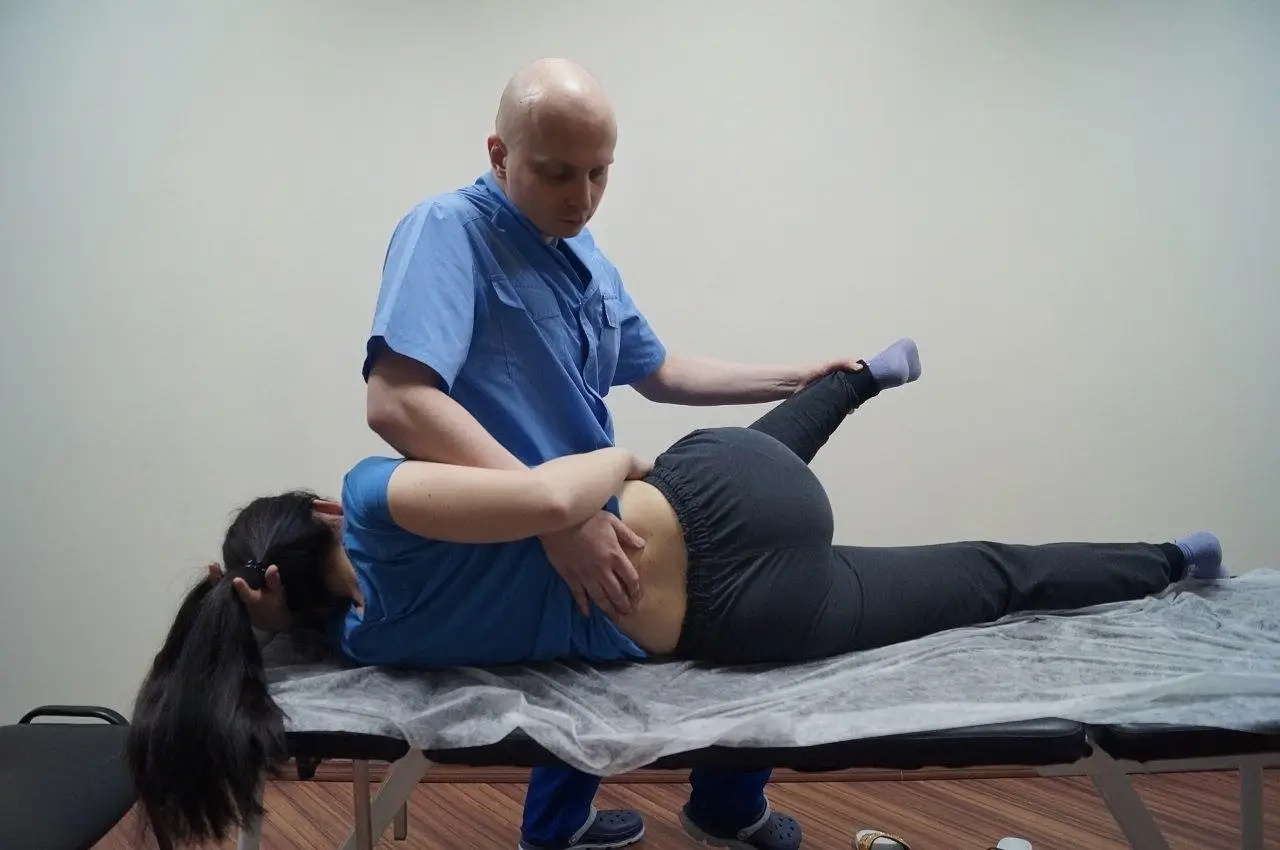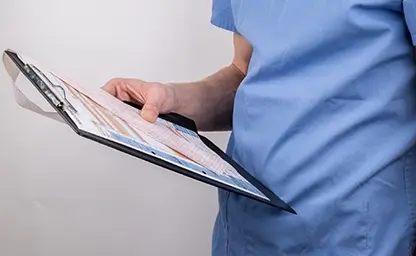

Neck pain can't turn head
A 24-year-old man. Complaints of neck pain when turning the head to the left, constant discomfort in the corner of the neck and under the nape of the neck. The problem has been bothering him for 2-3 years. Over the past year, there have been 5 episodes of exacerbation, during which the pain was very intense, sharp and the possible left turn was no more than 10º (limited to sharp pain from the back of the head to the lower edge of the scapula). Plus, he feels some discomfort in the left arm.
From the anamnesis: about 3 years ago, there was a fracture of the humerus on the right with subsequent prolonged immobilization (3 months), the habit of carrying everything on the right shoulder (it is more convenient). According to the patient, since childhood he has felt some kind of asymmetry, inconvenience when walking (waving his arms in different ways, trampling his shoes).
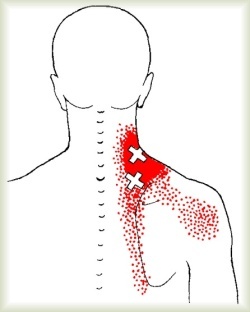 Objective examination: the range of motion of the neck and head is limited by pain (more to the left). The body is not symmetrical (shoulder and chest are higher on the left). Blockage of the right IS joint with rotation of the ilium posteriorly, functional shortening of the right leg and a corresponding S-shaped scoliotic posture with a bulge to the right in the lumbar spine. On palpation, there is a sharp tenderness of the levator scapulae muscle (its provocation causes referred pain in the scapula), the upper part of the trapezius muscle, the scalene muscles (provocation causes reflected pain in the arm and chest), and the suboccipital muscles. Functional blockages of the first rib, C0-C1, C1-C2, C5-C6, C7-T1, sternoclavicular and clavicular-acromial joints.
Objective examination: the range of motion of the neck and head is limited by pain (more to the left). The body is not symmetrical (shoulder and chest are higher on the left). Blockage of the right IS joint with rotation of the ilium posteriorly, functional shortening of the right leg and a corresponding S-shaped scoliotic posture with a bulge to the right in the lumbar spine. On palpation, there is a sharp tenderness of the levator scapulae muscle (its provocation causes referred pain in the scapula), the upper part of the trapezius muscle, the scalene muscles (provocation causes reflected pain in the arm and chest), and the suboccipital muscles. Functional blockages of the first rib, C0-C1, C1-C2, C5-C6, C7-T1, sternoclavicular and clavicular-acromial joints.
Diagnosis: levator scapularae muscle syndrome, blockage of the first rib, complex posture disorder, functional joint blockages of the cervical segments.
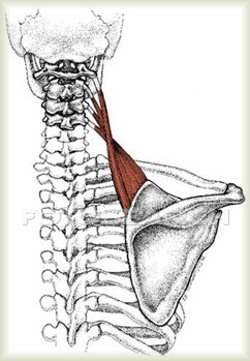 Treatment: muscle-energy techniques for functional joint blockages (pelvic, spine, first rib), techniques for progressive pressure increase on the most active trigger points, post-isometric relaxation of the levator scapulae muscle, scalene muscles. Myofascial release of the suboccipital region, cervical-thoracic junction.
Treatment: muscle-energy techniques for functional joint blockages (pelvic, spine, first rib), techniques for progressive pressure increase on the most active trigger points, post-isometric relaxation of the levator scapulae muscle, scalene muscles. Myofascial release of the suboccipital region, cervical-thoracic junction.
Results: after 5 sessions, a significant decrease in pain, a significant increase in painless range of motion, disappearance of discomfort "I feel asymmetrical, stiff". The patient was given recommendations for independent post-isometric relaxation, mobilization, self-massage, exercises to improve posture, and the importance of correct postures and movements at home and at work was explained.
He has been under observation for more than 3 years. There was not a single episode with blocking of neck movements and severe pain. The neck range of motion is full and painless. The patient follows the recommendations.
Pain in neck can't turn head. Conclusions.
Why he got neck pain and can't turn his head? I assume that the root cause of this asymmetry and the corresponding overloads and dysfunctions (note that the feeling of asymmetry and the habit of carrying everything on the left shoulder appeared before the fracture, which played an important role in exacerbating the problem) was a birth trauma.
This was confirmed by the patient's words: "before the age of one, I had a very asymmetrical head". In the described case, a cranial osteopath would have been very helpful, preferably in the first days of the patient's life. But osteopathy of newborns in this country is still only in its infancy. Unfortunately.

Grigori Tafi
Osteopath, sports medicine doctor
15 years of experience in osteopathy and manual therapy. Read more...
☛ Myofascial pain syndrome headache.
☛ Neck stuck in sleep.
